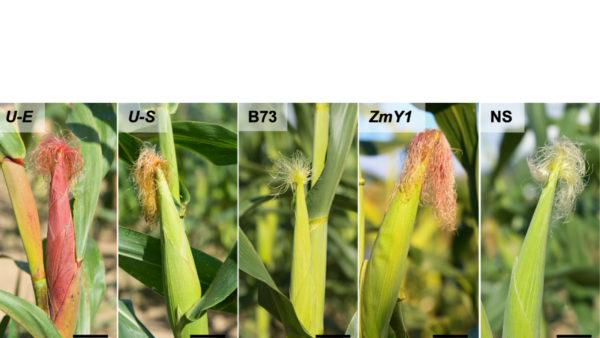We break down the first major document released by the Seed Synergy Collaboration Project working team, which proposes to rebuild Canada’s seed sector from the ground up.
The key to a successful 21st century Canadian seed industry is a modernized seed system that effectively attracts investment, fosters innovation, and delivers new and tailored seed traits to customers efficiently.
That’s according to the new green paper issued by the Seed Synergy Collaboration Project Team, which is made up of members of our industry six associations and is working to develop a next-generation seed system for the country via the Seed Synergy project.
First announced in 2016 and reported on extensively in Germination over the past number of months, the Seed Synergy project is being undertaken by all six associations that make up the seed industry — Canadian Seed Institute, CropLife Canada, Canadian Seed Growers’ Association, Canadian Seed Trade Association, Commercial Seed Analysts Association of Canada, and the Canadian Plant Technology Agency.
The Seed Synergy project kicked into full gear after a series of annual meetings in 2017, at which the boards of all six associations gathered to discuss the project and how to move forward.
Seed Synergy “represents an opportunity for us to rethink the seed system, and how we organize ourselves. The potential for partnership is great, as there are many areas where the various Synergy organizations might assist one another. The primary risk in this area is not acting: without action, we might not adapt to changing circumstances and find ourselves trying to update the seed system too far down the road.”
That quote comes from the 2015/16 annual report of the Canadian Seed Growers’ Association. The Seed Synergy project will culminate in a series of recommendations that will be provided to the Canadian Food Inspection Agency (CFIA) for the spring of 2018, a tentative date set by the CFIA in March of last year when it announced that it’s opening up Canada’s Seeds Regulations for review in order to “reduce overlap and redundancy, increase responsiveness to industry changes, address gaps, weaknesses and inconsistencies, and provide clarity and flexibility to affected regulated parties for seeds imported, conditioned, stored, tested, labeled, exported and sold in Canada.”
The green paper represents the current state of Seed Synergy thinking as of Fall 2017 (as stated in the paper itself), and will provide a reference point for engagement activities over the coming months. Engagement activities will help the Seed Synergy project team to refine and finalize its policy proposals for the Canadian seed system, and the resulting white paper may be quite different from this document, the team notes.
We’ll cover the highlights of the green paper in this print edition of Germination, and in March we will discuss with industry stakeholders what the implications are for the project and the industry in general.
To read the full green paper, visit http://seedgrowers.ca/wp-content/uploads/Synergy-Green-Paper-5.3.pdf
Making the Case for Change
According to the green paper, Canada’s seed system is in danger of imploding due to a number of factors, among them the fact that our system is an old and arguably out-dated one.
“The competitive position of the Canadian seed industry and agriculture sector is strong, but its potential remains constrained by barriers to entry for new innovation, and the lack of a system and mechanism for facilitating reasonable returns on plant breeding investment to key crop sectors,” the paper states.
In addition, it argues that while Canada has an excellent national system assuring and tracing the genetic identity and origin of seed in the marketplace, seed sold as common seed does not provide these benefits, nor contribute directly to the seed system.
These factors, the green paper says, limit both domestic and export market-driven growth for Canadian producers, and if not addressed will place Canada at a productivity disadvantage relative to its international competitors.
As a result, the green paper argues that a revamped seed system is needed in Canada, one that delivers:
- Improved profitability, which will in turn stimulate the investment needed to deliver a steady stream of new product innovation and growth;
- A more efficient governance model for the seed system, where stakeholder organizations work in tight collaboration with each other and government in potentially new configurations;
- Regulations that make sense and that are easier to understand, navigate, and comply with;
- A system that better adapts to change, and responds and adjusts to sector needs on an ongoing basis;
- A competitive environment that has space for businesses of all sizes to be successful and competitive, not just the biggest players with the most resources.
“In this context, the case for change is clear. To realize its full potential, Canada needs to rethink the core policies, legislative and regulatory frameworks, and associated institutional arrangements that make up the seed system of today. The rules and practices simply have to change, to deliver a more responsive, transparent, and customer-focused system, and to make Canada an attractive investment market for both large and small businesses.”
In addition, the paper says industry organizations that currently share responsibility for seed system management with government need to assume collective responsibility (and organize themselves accordingly) for the success of the next-generation seed sector.
What if these changes don’t occur? The green paper warns the industry will pay the price down the road because:
- Where new innovation does occur, it will too often be slow to enter the market, hurting not just the seed industry, but the entire Canadian agricultural value chain that depends on innovation to remain competitive in a global marketplace.
- The key industry organizations upon which the seed and agriculture sectors depend for leadership will remain loosely aligned and less effective than they could be, in the process passing on the costs of their lower efficiency and effectiveness to their members and to the sector as a whole.
- The federal government will likely continue its “ongoing piecemeal withdrawal of support” to a seed system for which they will continue to be accountable, while shifting the costs of an increasingly unsustainable model to industry “until it collapses under its own weight.”
A Need for Reform
A reformed, industry-led, government-enabled seed system that effectively attracts investment from businesses both large and small, fosters innovation, and delivers new and tailored seed traits to customers efficiently is what Canada needs, according to the green paper.
The Seed Synergy project team is proposing to accomplish this through reforms in the areas of:
- Research & Development: the green paper proposes a new, risk-based assessment model that sets regulatory requirements in proportion to the projected risk of new products. “Government will continue to lead oversight of the system, and government-sectoral coordination needs to be enhanced to define regulatory standards that make sense.”
- Market Entry and Commercialization: proposes replacing the current variety registration and variety eligibility for certification regimes with an integrated system, anchored in a product profile for all approved seed products, containing all regulatory and commercial information relevant to that product in one, easily accessible place or virtual space, with access to confidential business information about a product limited to those granted explicit access to it.
- Production and processing: proposes a modernized pedigreed seed system that will facilitate an increase in pedigreed seed use and a reduction in incentives for common seed production, as new high-performing protected varieties replace older ones. “We propose an expansion of options for producing seed under comprehensive quality management systems that do not require third-party crop inspections but which are backed by third-party audit frameworks.”
- Sales and distribution: proposes a universal seed lot listing system, where seed for sale is listed along with at least a declaration of identity and quality.
A graphical depiction of what a next-generation seed system could look like, according to the green paper.
It also proposes a new value creation model that enables technology transfer and innovation and drives economic growth, featuring a seed sale listing system that brings increased transparency and utility to seed sales across the country, allowing for more efficient protections of intellectual property rights and commercial transactions.
Finally, the green paper proposes improving governance of the seed system overall to sustain these reforms, and to better coordinate priorities across the seed and agricultural sectors. It suggests creating an “anchoring organization” that would perform many of the functions proposed herein.
“This could take the form of a single organization or a formal network of organizations or parts thereof,” it says.
Working Better Together
Along with the proposed new model that emphasizes improving the basic functions of the industry is a proposal to change the way the industry’s six associations work and interact with one another.
“A common thread underlying many of the proposals put forward in this paper and a clear point of emphasis during Seed Synergy Collaboration Project discussions is the need for greater coordination among the six Synergy organizations, and with government,” the green paper states.
“The six organizations‚Ķ play largely complementary, rather than overlapping, roles in the system of today. Nonetheless, in examining the case for change we have highlighted a simple fact: the system of today is fragmented. No one starting with a blank slate would design the private and public organizational divisions and responsibilities as they exist today.
“Having many organizations means that coordination can be limited, overall administrative costs are increased, information sharing is constrained, and the voice of the sector is diluted.”
The human capital thinly dispersed across these organizations, departments and
agencies needs to be concentrated in core networks and/or organizations to restore lost critical mass, increase effectiveness, and lay the foundation for sound succession planning and capacity building where it is needed most, the paper proposes.
“Today’s organizational model simply spreads too few resources too thin over too wide an area of responsibility and accountability. Real and significant organizational change will almost certainly be required of the Seed Synergy organizations. ‚ĶOur vision does not rely on a specific organizational model to achieve. It does require long-term and close collaboration, as well as integrated systems and approaches.”
It proposes looking at the formation of a central organization or network of organizations working through a new public-private partnership arrangement.
“Such an organization could integrate many of the key policy analysis, program development, regulatory functions, member services activities, education and promotional activities, public relations work, training and development, and administrative services currently embedded in a number of existing industry and government organizations.”
“No one starting with a blank slate would design the private and public organizational divisions and responsibilities as they exist today.” Seed Synergy green paper
What Now?
It’s worth noting the green paper has not been approved or endorsed by any of the six Seed Synergy organizations.
According to the document, the project team will test the ideas presented via consultations within the Seed Synergy organizations and with members and key industry stakeholders and government.
“In parallel, and with important government support, we are undertaking a comprehensive Economic Impact and Risk Analysis of various emergent change options as we further explore and better understand the implications of the proposals contained within this green paper.”
A formal white paper is to be finished for Spring 2018, which is when the Seed Synergy team is scheduled to present its recommendation for reforming the Canadian seed industry to the Canadian Food Inspection Agency.
Germination’s recent series of stories/podcast episodes on the past, present and future of the Canadian seed industry dealt heavily with the roles played by all six industry associations, and their thinking on the Seed Synergy project and what it means for the future.
Watch our website and see our March 2018 print edition as we follow up with industry stakeholders and get their thoughts on the green paper and what it means for the industry in general.













